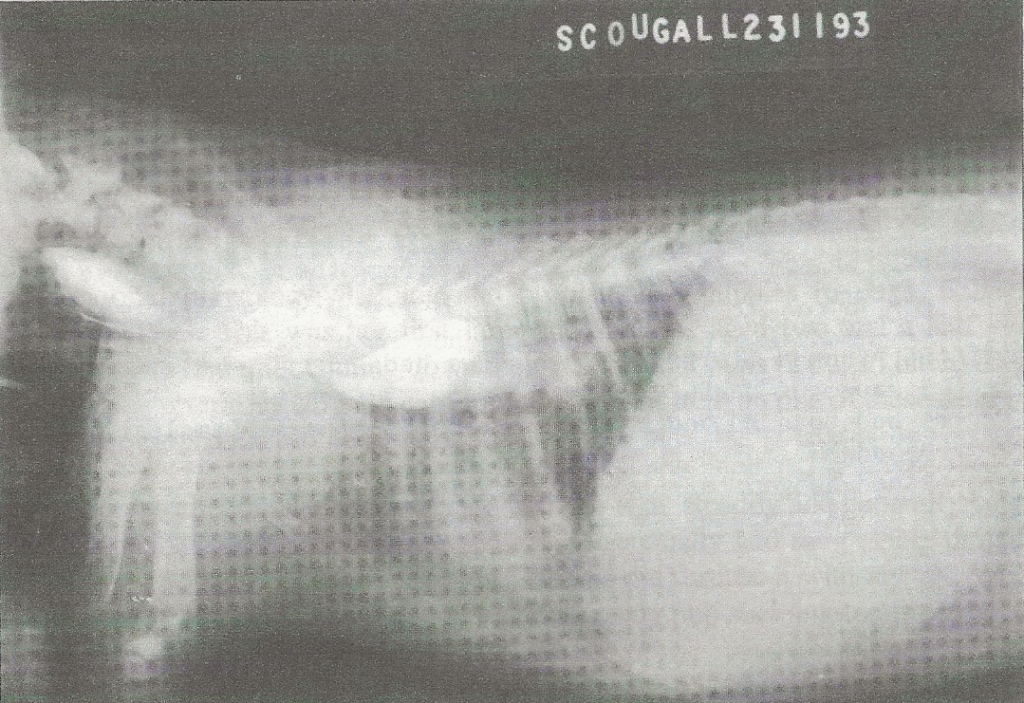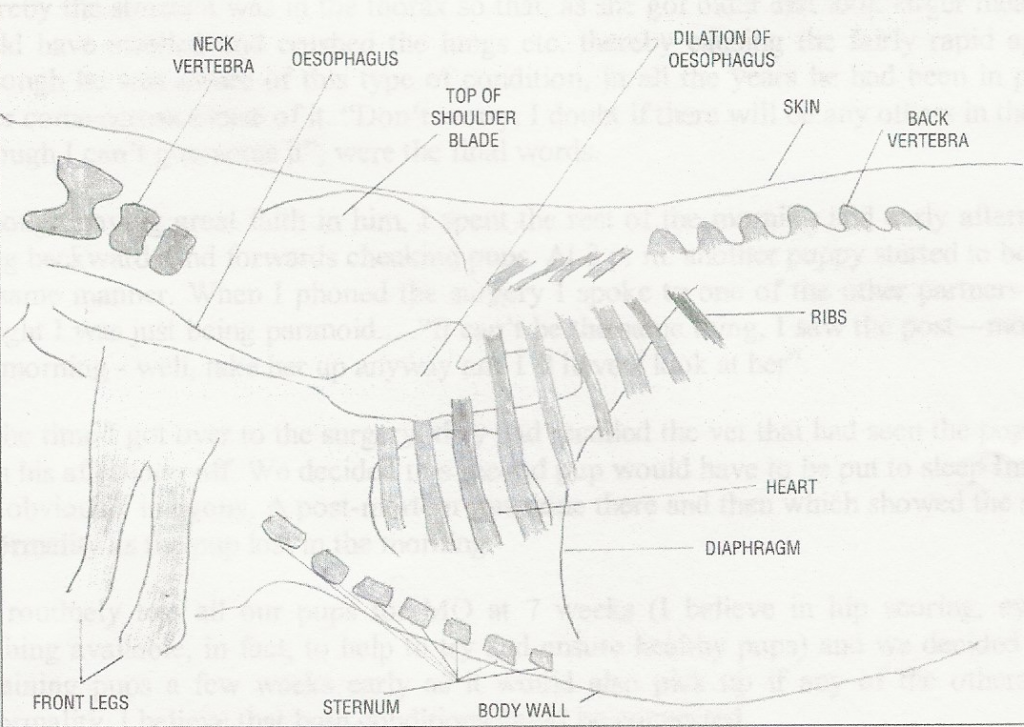Irish Setter Breeders Club, Summer 1994
This article is not done with the intention of attributing blame to anyone – it is simply to try and make other breeders aware of a problem I had with a litter of Irish Setter puppies.
My bitch had a normal pregnancy/whelping and produced 12 puppies (6 dogs, 6 bitches) on Monday, October 4th 1993. This was her first litter and she was aged two and a half years. We noticed that some puppies had milk coming down their nose and 3 pups (2 dogs/1 bitch) died within the first three days. Our veterinary surgeon carried out a post-mortem on one of these dead pups and thought there was an oesophagus problem.
The nine remaining pups all appeared to flourish, gaining weight steadily and generally behaving as one would expect a healthy litter of Irish pups to be. I occasionally had the passing thought that I noticed traces of milk coming down another pup’s nose and did discuss it with my vet. We felt that as they were otherwise healthy etc. it was possibly just a greedy pup suckling too much of its dam’s milk. With hindsight I wish we had taken more note of it.
When the pups were about four weeks old, I went out with them one morning to tidy up and let their dam in for a few minutes. They were all fine; a few minutes later one of the bitch puppies was screaming and holding her neck rigidly – obviously in great distress.
After phoning the surgery, I drove up to the vet (approx. 15 minutes away). He was not sure what was wrong with her at this point but we both knew it was something fairly drastic as she appeared to be going into circulation failure. She died about an hour later. A post-mortem was done on her that morning and when our vet phoned with the results he told me that she had a congenital problem whereby the stomach was in the thorax so that, as she got older and took larger meals, the stomach would have swelled and crushed the lungs etc. thereby causing the fairly rapid agonising death. Although he was aware of this type of condition, in all the years he had been in practice, he had never come across a case of it. “Don’t worry, I doubt if there will be any others in the litter affected, although I can’t guarantee it”, were the final words.
Although having great faith in him, I spent the rest of the morning and early afternoon constantly going backwards and forwards checking pups. At 3 pm another puppy started to behave in exactly the same manner. When I phoned the surgery I spoke to one of the other partners who, I’m sure, thought I was just being paranoid… .“It can’t be the same thing, I saw the postmortem of the one this morning – well, take her up anyway and I’ll have a look at her.”
By the time I got over to the surgery, they had recalled the vet that had seen the pup in the morning from his afternoon off. We decided this second pup would have to be put to sleep immediately as she was obviously in agony. A postmortem was done there and then which showed the same congenital abnormality as the pup lost in the morning.
We didn’t lose any of the others over the weekend and first thing Monday morning I took the remaining seven pups to the vet for a Barium meal X-ray. I only took five home with me. The other two (1 male; 1 female) were put to sleep – the male due to MO; the female had MO plus the congenital abnormality. These were confirmed by postmortem. Another male had not given a clear result and would be done again at seven weeks – if he was still alive.
We routinely test all our pups for MO at 7 weeks (I believe in hip scoring, eye testing etc. – anything available, in fact, to help to try and ensure healthy pups) and we decided to do all of the remaining pups a few weeks early as it would also pick up if any of the others had this same abnormality. I believe that both conditions could be connected.
If any of you have driven an apparently happy, healthy, 7 week old puppy to the vet and then driven home without him, you would understand how desperate I felt when just over two weeks later that pup also had to be put to sleep.
We have a video of this litter of pups taken at various stages and I doubt if anyone would be able to pick out the pups that had been affected. The dam of my bitch had previously produced a litter of nine pups to the same dog – one pup in that litter had been affected by the congenital abnormality but, as in the case of the first puppy we lost at four weeks, it was such an unusual condition it was thought to be a ‘one off’. None of the pups from that litter had shown MO when screened at 7 weeks.
For the record, my bitch had been screened and tested MO clear at seven weeks of age, as had her dam and a further three generations of the tail female line behind her as well as all siblings from those respective litters.
So, from a litter of 12 pups we had:
* 2 cause of death unknown (1 male; 1 female);
* 1 had both MO and congenital abnormality (1 female);
* 3 had MO (males);
* 2 had congenital abnormality (females);
* 4 normal puppies (2 male; 2 female).
I found this whole episode very distressing – but how much more so for the owners of these pups had they been sold, possibly lived until they were 6-12 months old then died? Its feasible that I could also have been legally liable if this had happened.
Unless we, as responsible breeders, start to screen ALL breeding stock, this type of thing will continue to occur.


